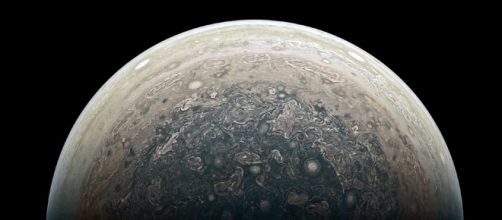NASA´s Juno spacecraft has orbited four times around Jupiter since July 4, 2016 in a 53-day temporary Orbit. The original plan was that some months after its arrival Juno would have taken a 14 day fixed orbit for the entire mission; however, a change in plans has determined that Juno remain in its current 53 day orbit which will still allow it to achieve this missions main objectives. This will prevent the risks involved in the engine-firing phase that would have set Juno in an orbital peroid of 14 days.
Juno
The spacecraft has travelled four times around Jupiter since its arrival.
The most recent orbit occurred on February 2 and the next flyby will take place on March 27. Juno is in perfect condition and so are all the science instruments onboard. On each flyby, Juno has captured very high fidelity images of Jupiter. There are now evidences that the magnetic field and auroras are more energetic than previously thought and that the cloud tops prolong deep inside the planet´s interior.
Juno´s mission
At the time of closest approach to Jupiter, Juno flies over the cloud tops of the gas giant at approximately 4000 km (2,600 miles), studying Jupiter´s atmosphere, magnetic field and auroras. Juno´s mission includes the study of Jupiter´s magnetic field, its atmosphere and auroras to better understand its origin and evolution not only of it, but also of other gas giants in the universe.
The not foreseen science objectives will open new possibilities for the understanding of the origin and evolution of these types of planets.
Valuable science not foreseen in the original pan
The 53-day orbit around Jupiter will allow attaining extra science achievements that had not been considered in the original plan. Juno will examine Jupiter´s magnetosphere, allowing understanding the way in which the solar wind affects Jupiter´s magnetic field. This long orbit will also allow Juno to remain a minimum amount of time within the reaches of Jupiter´s strong radiation belts.
Although the flybys around Jupiter will occur every 53 days, the science data collected will not be affected, as Juno will fly at almost the same altitude over Jupiter; furthermore, this will permit a broader scope of science objectives and further exploration of Jupiter.
Juno´s science reports are allowing scientist to consider their theories about how planets evolve.

